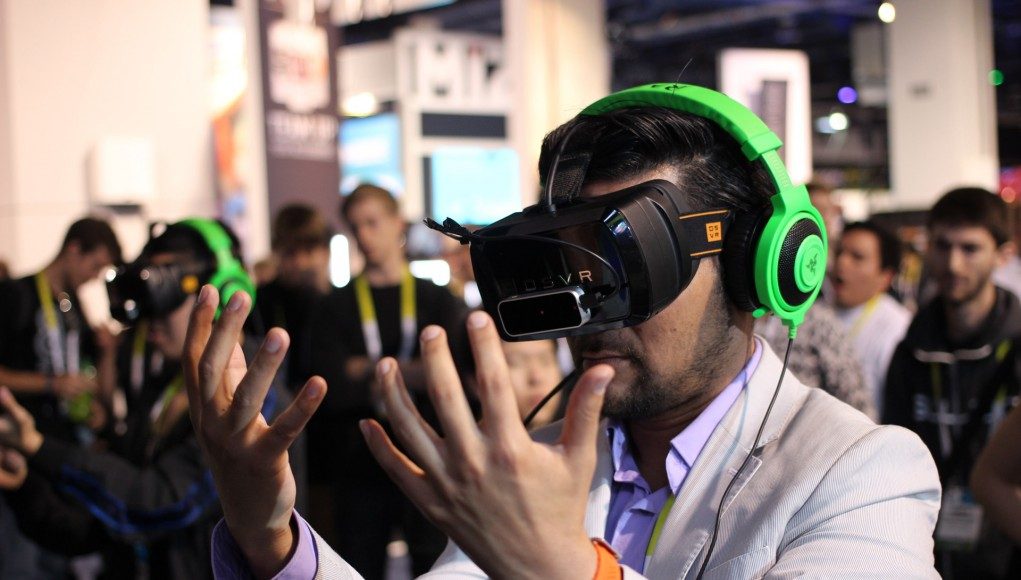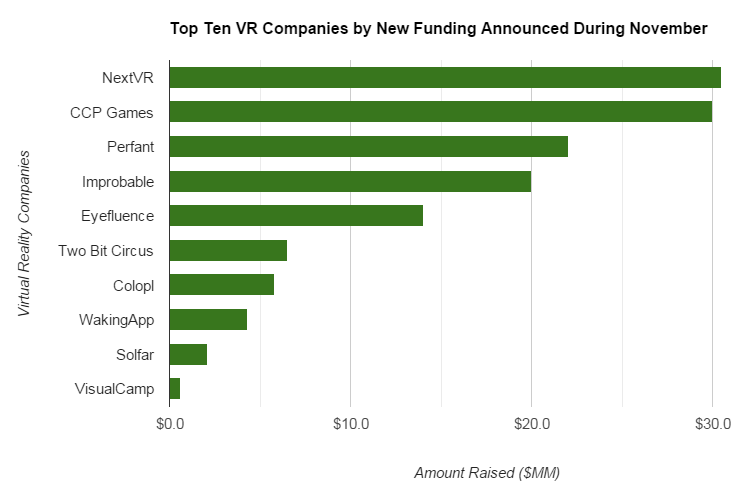Still think virtual reality is a fad? The latest data suggests over $136M was raised by VR startups in the month of November 2015 alone. It appears that VR is quickly leaving the realm of odd curiosity and is now forming a foundation and financial base for a legitimate standalone VR industry.
Ben is an active investor in VR and digital media, and is based in Los Angeles. Ben was an early Google and YouTube exec, and has founded and led multiple venture backed video startups. His monthly profiles on “why people are great at what they do” are found here.
VR market intelligence firm Greenlight VR tells Road to VR that more than $136 million was invested into virtual reality in November alone, and that’s excluding crowdfunding and private deals. For comparison, that figure is slightly more than the total raised ($132 million) in aggregate by “pure-play” VR companies in July, August, and September combined.
Here is a chart of the top ten companies who raised in November (data courtesy Greenlight VR):
You’ll notice that the funding skews top-heavy, with companies like NextVR and CCP Games raising healthy amounts of additional capital. The implication is that existing VR companies have been successful in securing the resources they need in order to make the big potential VR land grab. Likewise, seed investment with new companies toward the bottom of the list suggest that investors still believe there is lots of room to play and compete in this young industry.
See Also:
- NextVR Raises $30.5M to Accelerate Broadcast VR Development
- CCP Games Secure $30M To Expand VR Development
If you throw in the New York Times including a free set of Google Cardboard to every print subscriber in November, it feels like the VR ecosystem is more than primed to explode into consumer’s homes in 2016. The VR startups I invest and advise also anecdotally report consumer and corporate interest in VR technology is in line with the higher level of investment we’re seeing in Q4 2015. Everybody is simply trying to keep up with interest and demand.
What does this mean in the big picture for VR? Already frothy total addressable market projections may need to be recalibrated to incorporate these strong November numbers. When looking at market comparables, we may need to begin to look beyond online video comparisons, and start to peek at how VR investment parallels early investment in the mobile industry.
See Also: Here We Go (Again) – The VR Industry Is Spinning up Just like Online Video 10 Years Ago
If this is a fad, virtual reality sure is going to be an expensive fad for many investors and large corporations around the world. At this point, it’s more likely we’re witnessing the beginning of a seismic multiyear shift in consumer technology platforms.
As the countdown to the launch of major VR headsets becomes shorter and galvanizing, look for these recent VR investment dollars to be deployed in helping consumers more quickly adopt the new technology and foster discovery of amazing virtual reality use-cases. The pressure will be on to get consumers on these platforms at a faster rate than ever. But for now, it’s happy smiles all around for VR startups—Christmas just came a month early, and December is already off to the good start.









